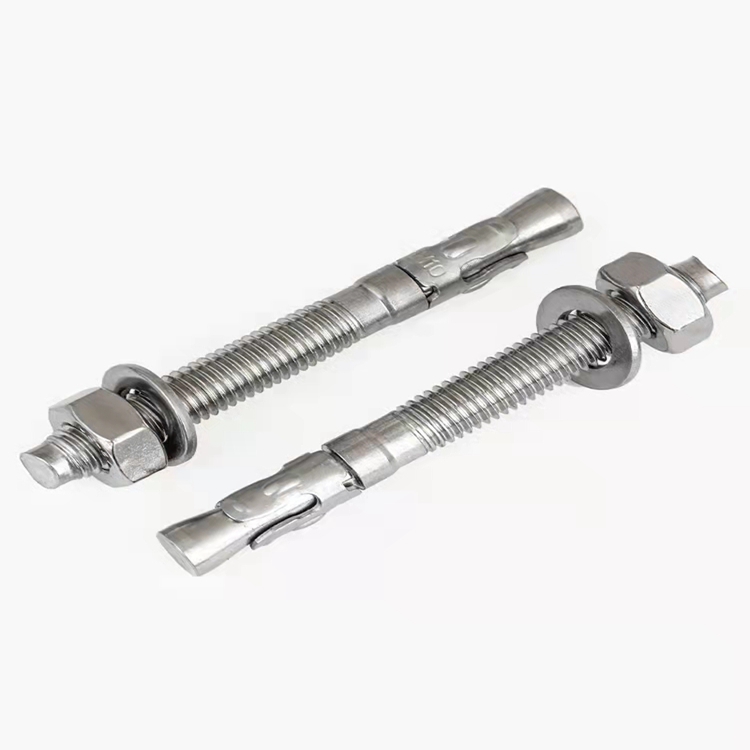stud bolt with hex nut
Nov . 05, 2024 08:34 Back to list
stud bolt with hex nut
Understanding Stud Bolt with Hex Nut Essential Components in Fastening Technology
In the realm of mechanical engineering and construction, fastening systems play an indispensable role in ensuring the integrity and stability of structures and machinery. Among the myriad of fastening options available, the stud bolt paired with a hex nut stands out for its versatility and reliability. This article delves into the characteristics, applications, and advantages of the stud bolt with hex nut assembly.
What is a Stud Bolt?
A stud bolt is a type of fastener that consists of a cylindrical rod with external threads on both ends, but no head. This design allows for the stud to be inserted into a tapped hole, where it can be secured on both ends with nuts. The primary advantage of this configuration is that it facilitates easier alignment and installation, making the stud bolt a preferred choice in various heavy-duty applications.
The Role of the Hex Nut
A hex nut, commonly made of steel or other durable materials, is a six-sided fastener used to secure the stud bolt. It is designed to fit snugly onto the threads of the stud, allowing the user to leverage a wrench for tightening. This simple yet effective design provides a firm grip, which is essential for maintaining stability and strength in any application.
Key Features
1. Material Composition Stud bolts and hex nuts are often made from materials like carbon steel, stainless steel, or alloy steel. These materials are chosen based on the specific requirements of the application, including resistance to corrosion, temperature fluctuations, and mechanical stresses.
2. Thread Standards The threads on stud bolts and hex nuts typically conform to specific standards such as Unified National Threads (UNC/UNF) or Metric threads. This standardization ensures compatibility between different components, allowing for seamless integration in various installations.
3. Load-Bearing Capacity The stud bolt and hex nut assembly is designed to withstand significant loads, making it suitable for use in structural applications, piping systems, and heavy machinery.
stud bolt with hex nut

Applications
The stud bolt with hex nut assembly is utilized across various industries
. Some prominent applications include- Construction Stud bolts are commonly used to secure steel beams, columns, and other structural components in buildings and bridges. - Oil and Gas In the oil and gas industry, these fasteners are vital for pipelines and pressure vessels, ensuring the secure closure of high-pressure systems. - Heavy Machinery Equipment in sectors like manufacturing and mining often employs stud bolts with hex nuts to secure critical components subject to vibration and heavy loads. - Automotive Within automotive applications, these fasteners are used in engine assemblies, chassis components, and transmission systems.
Advantages
1. Ease of Installation The design of stud bolts allows for simple installation without the need for a complicated tooling setup. This is especially beneficial in locations with limited access.
2. Adjustability The use of two hex nuts enables fine-tuning of the fastening torque, allowing for adjustments without disassembling the entire installation.
3. High Strength Their ability to handle high tensile loads makes stud bolts and hex nuts reliable in critical applications where failures could have severe repercussions.
4. Corrosion Resistance By using materials like stainless steel, stud bolts can provide superior resistance to rust and corrosion, extending their service life.
Conclusion
The stud bolt with hex nut assembly is a critical component in engineering and construction, offering a dependable solution for securing various structures and machinery. With their impressive load-bearing capabilities, ease of installation, and versatility across applications, they continue to be a staple in the toolkit of engineers and builders. As industries evolve and demand for stronger, more durable fastening solutions increases, the stud bolt and hex nut assembly will undoubtedly remain an integral part of fastening technology.
Latest news
-
High-Quality Panel Stud Bolt Reliable Panel Stud Bolt Factory & Suppliers
NewsJul.08,2025
-
High-Precision Fine Thread Locknuts Manufacturer & Supplier Custom Solutions
NewsJul.08,2025
-
PH Imperial Stud Bolt – High Strength Fasteners from Leading Supplier & Factory
NewsJul.07,2025
-
High-Quality Allen Wrench Bolts Leading Factory, Company & Suppliers
NewsJul.07,2025
-
Wholesale Ball Stud Bolt - High Quality Supplier & Factory Price Reliable Wholesale Ball Stud Bolt Company
NewsJul.06,2025
-
High-Strength Alloy Bolts Manufacturer & Supplier Quality Alloy Fasteners Factory
NewsJul.06,2025
